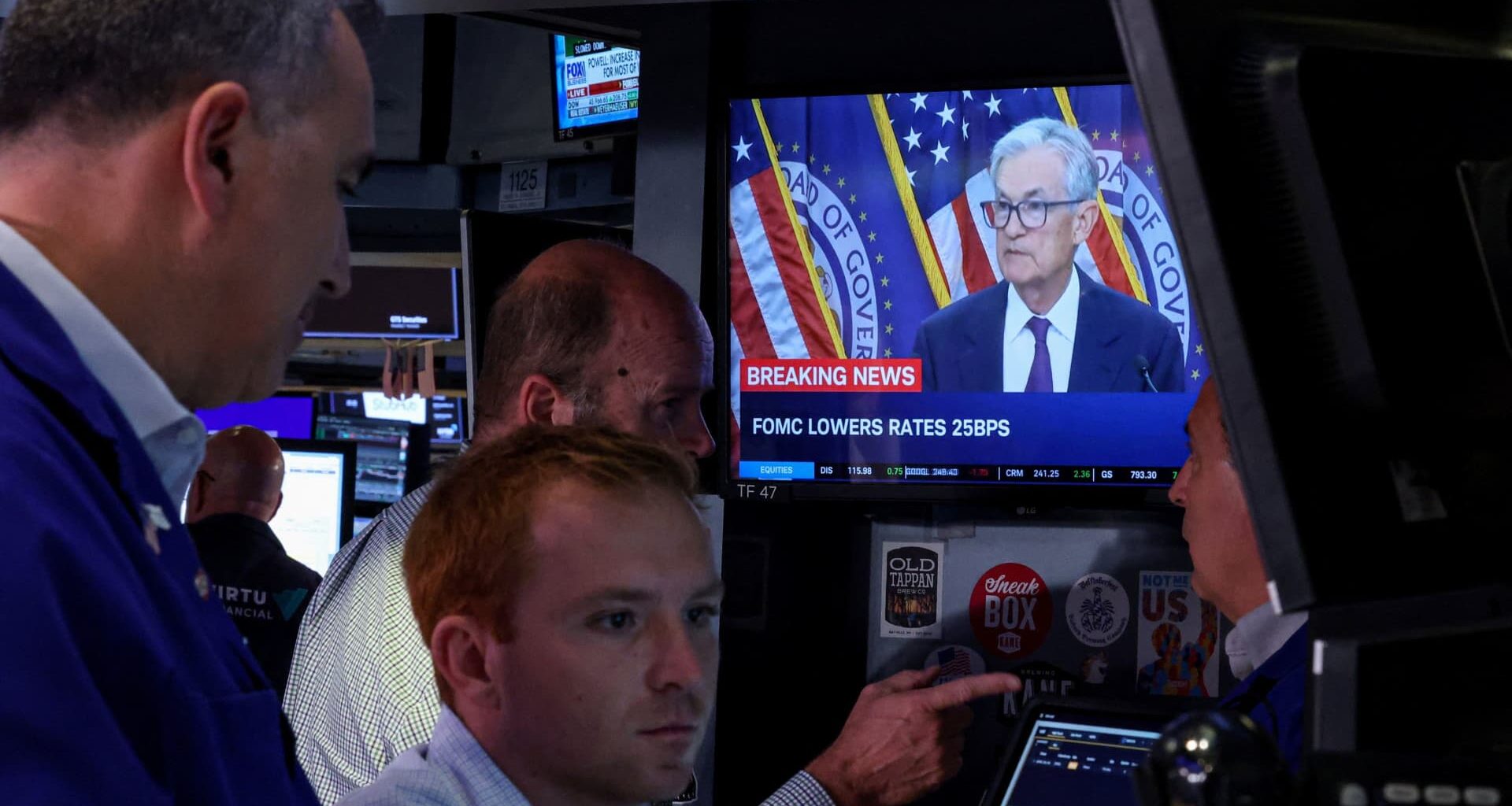Traders work, as a screen broadcasts a news conference by U.S. Federal Reserve Chair Jerome Powell following the Fed rate announcement, on the floor of the New York Stock Exchange (NYSE) in New York City, U.S., Sept. 17, 2025.
Brendan McDermid | Reuters
The Dow Jones Industrial Average closed higher and the S&P 500 was little changed after a volatile day of trading as the Federal Reserve lowered its benchmark rate as expected on Wednesday. Fed Chairman Jerome Powell tempered enthusiasm a bit by signaling the move was not the start of a long rate-lowering cycle.
The broad-market index settled down 0.1% at 6,600.35, while the Nasdaq Composite dropped 0.3% to 22,261.33. The Dow finished up 260.42 points, or 0.6%, at 46,018.32, after earlier hitting an all-time high.
Shares of high-flying tech stocks led the losses following the Fed decision as investors took profits on the bull market winners. Nvidia, Oracle, Palantir and Broadcom each closed lower. On the positive side, stocks that would benefit from lower rates were in the green, boosting the Dow and the broader market. Shares of Walmart, JPMorgan and American Express were higher during the session.
One of the biggest winners of the day was the small cap-focused Russell 2000, which jumped 0.18%. Smaller companies rely more on variable financing and so stand to benefit from lower rates.
The Federal Open Market Committee lowered its benchmark overnight lending rate by a quarter percentage point in an 11 to 1 vote, putting the overnight funds rate in a range between 4%-4.25%. The central bank also signaled two interest rate cuts will be implemented during the remainder of the year.
The Fed noted recent sluggishness in the labor market in its statement. “Job gains have slowed, and the unemployment rate has edged up but remains low,” the committee noted in its post-meeting statement, which also noted that economic activity has “moderated” and inflation “has moved up and remains somewhat elevated.”
Possibly disappointing traders was a Powell comment in his press conference after the decision where he characterized the move as a “risk-management cut.” Powell’s comments suggest this move was more of an insurance cut in case the economy dramatically slowed.
“There are no risk-free paths now. It’s not incredibly obvious what to do,” Powell said.
What’s more, the central bank gave a hawkish outlook for rates in 2026, where officials are predicting only one more rate cut in the new year, slower than the current market pricing of two-to-three. To be sure, the Fed’s so-called dot plot shows a large variance of opinion for the next year.
“Net, net, Fed officials did not hit the panic button as they chose to cut rates by the smallest possible magnitude at the September meeting,” said Christopher S. Rupkey, chief economist at FWDBONDS. “The one rate cut per meeting pace shows they no longer feel tariff-based inflation is a serious threat and that the economic growth slowdown with companies onboarding fewer new employees is increasingly the bigger risk. Stagflation is out and labor market concerns are moved to the front-burner.”
Major U.S. indexes rallied ahead of Wednesday’s decision. The S&P 500 is up 2.2% month to date, while the Nasdaq has jumped 3.8% on a surge in artificial intelligence-related stocks. The Dow is up 1% this month.

